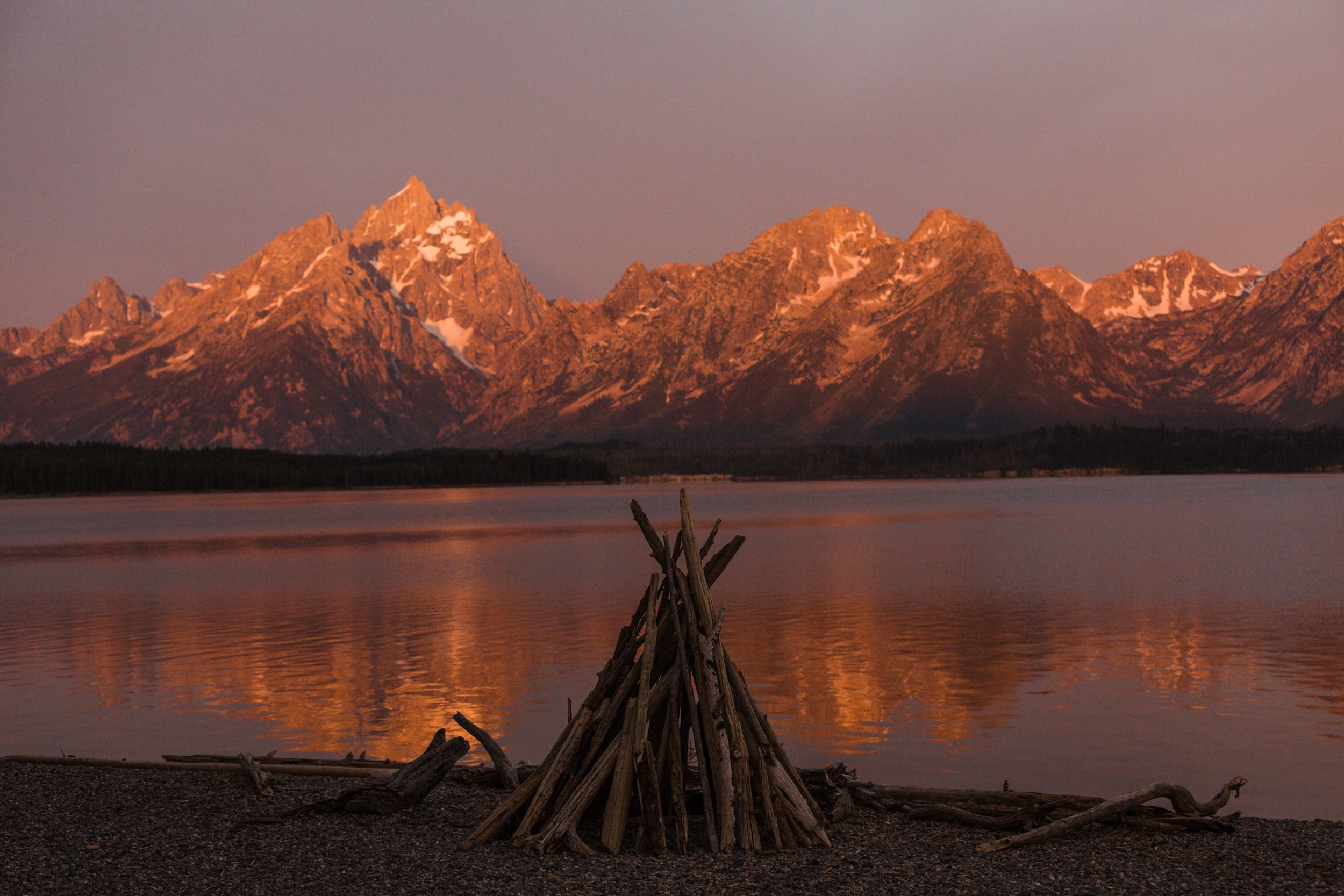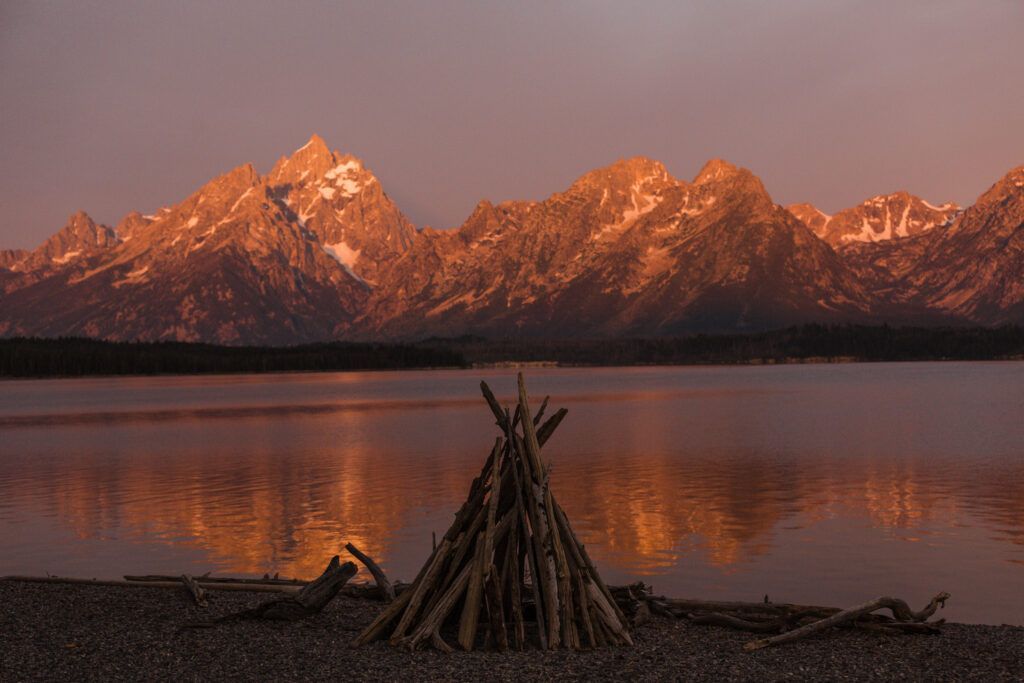I am a national parks buff. I mean, I am really crazy about traveling to national parks all over the world. As a family, we have been known to pack our bags at the drop of a hat, load up the car, and head out for a visit to our fabulous national parks. National parks provide some of the best landscapes and vistas you can find.
Because much of the land and natural resources are protected, you really get to see nature at its very best. There is so much to see, do, explore, and of course, photograph. Photography in national parks offers incredible opportunities to create some amazing photos and memories.
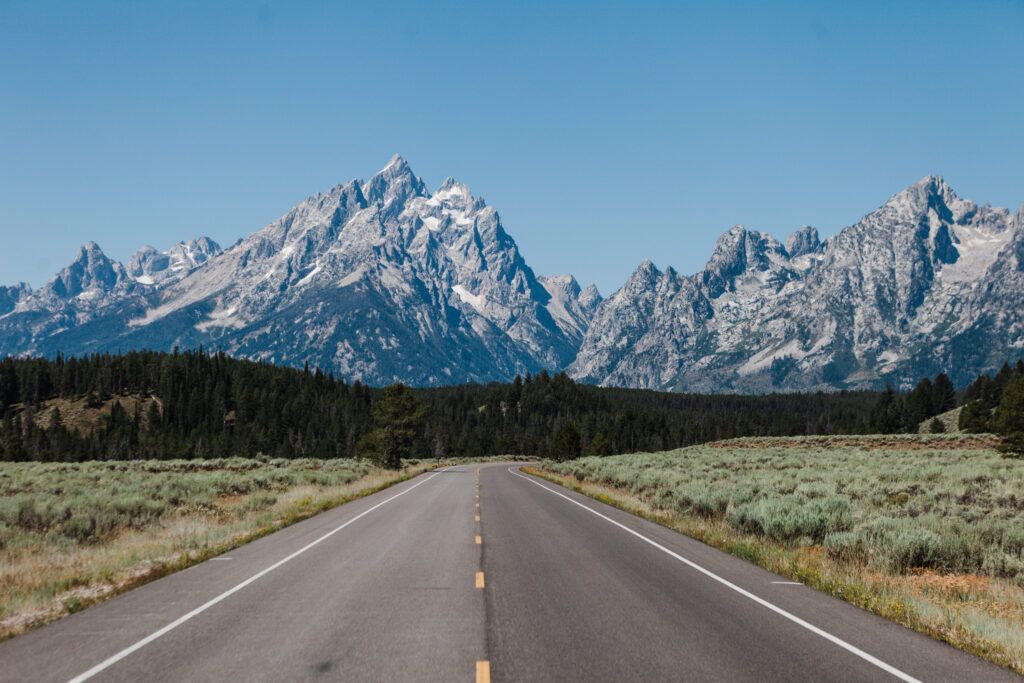
Photograph by Karthika Gupta
Additionally, there are a huge number of photographers who make a living photographing landscapes, animals, and vistas in these national parks – talk about it being a dream job.
One of my favorite places to practice wildlife and nature photography is the Greater Yellowstone Ecosystem (GYE). The GYE encompasses Yellowstone National Park, Grand Teton National Park, and the surrounding areas, and is one of the few ecosystems in the country that still has populations of all the major species of animals indigenous to North America. From wolves to grizzly bears, foxes, coyotes, moose, bison, elk, and countless birds and other smaller mammals, the area around GYE is a magnet for wildlife lovers and nature photographers alike.
The area around GYE is a magnet for wildlife lovers and nature photographers alike.
What makes Grand Teton special is the fact that there are no foothills that obstruct your view of the breathtaking Teton mountain range. The entire Teton range is relatively young in terms of other geological mountain formations. The 2.7-billion-year-old rocks that are found in the core of the range are some of the oldest in North America, but these mountains are among the youngest in the world. This brings about a diverse landscape in the park and hence incredible photography opportunities as well.
Recommended Reading: Want to expand your shooting skills and master photography? Grab our set of 65 beautifully designed and printable Action Cards that will give you over 200 photography assignments to help you take your photography to the next level. Check it out here.
Alpine Communities
Alpine communities are traditionally higher elevation areas in the park that have a brief growing season and persistent wild or cold climates. Snow is generally on the ground year-round and hence these areas are more popular among backcountry hikers and campers. This makes for great areas to get epic one-of-a-kind photographs.
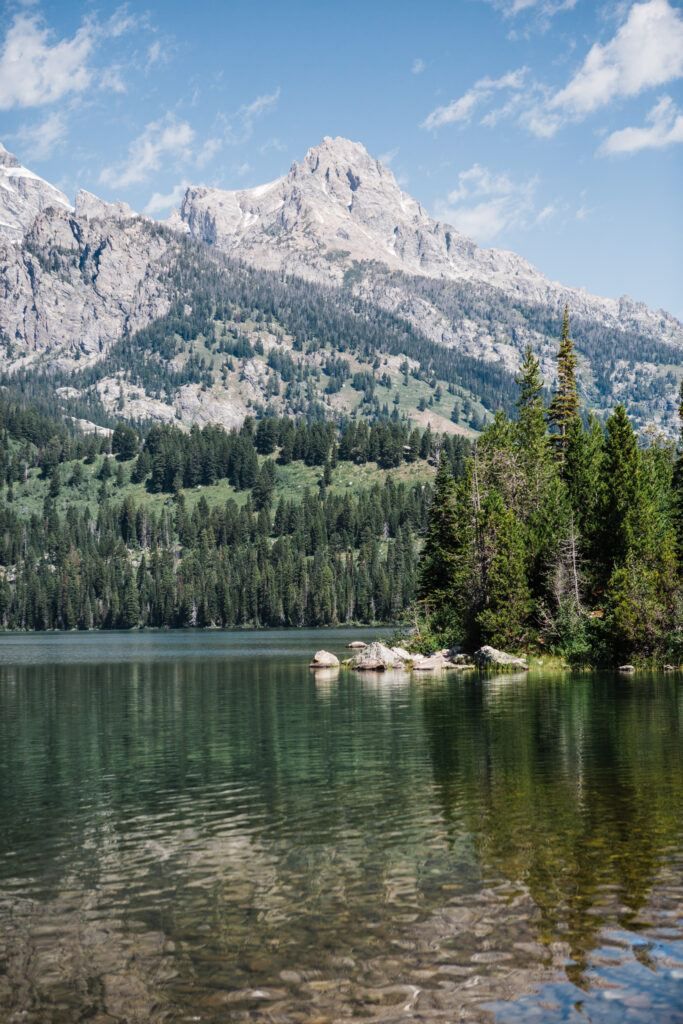
Photograph by Karthika Gupta
Key Lesson: Backcountry camping and alpine hiking aren’t for everyone. Do your research and be prepared if you want to go into the backcountry. Chances are you will have to limit yourself with the gear you carry in and out because of weight limitations. But they are a great way to see and experience a part of the park that is not that popular with typical tourists.
Forests
Darker greens of Tetons are forests that grow where the sides of the mountains hold water that can be accessed by tree roots. This means that forests of lodgepole pine, Douglas fir, and spruce along with others dot the landscape, making it perfect for fall colors photography.
Sagebrush Flats
Sagebrush flats dot a lot of the landscape around Grand Teton. The rocky terrain of Grand Teton discourages more plants, but this hardy plant seems to grow in most areas. This is the prime feeding ground for pronghorn deer, elk, and sometimes even moose. So, keep your eye out for these creatures among all the sagebrush plants around the Tetons.
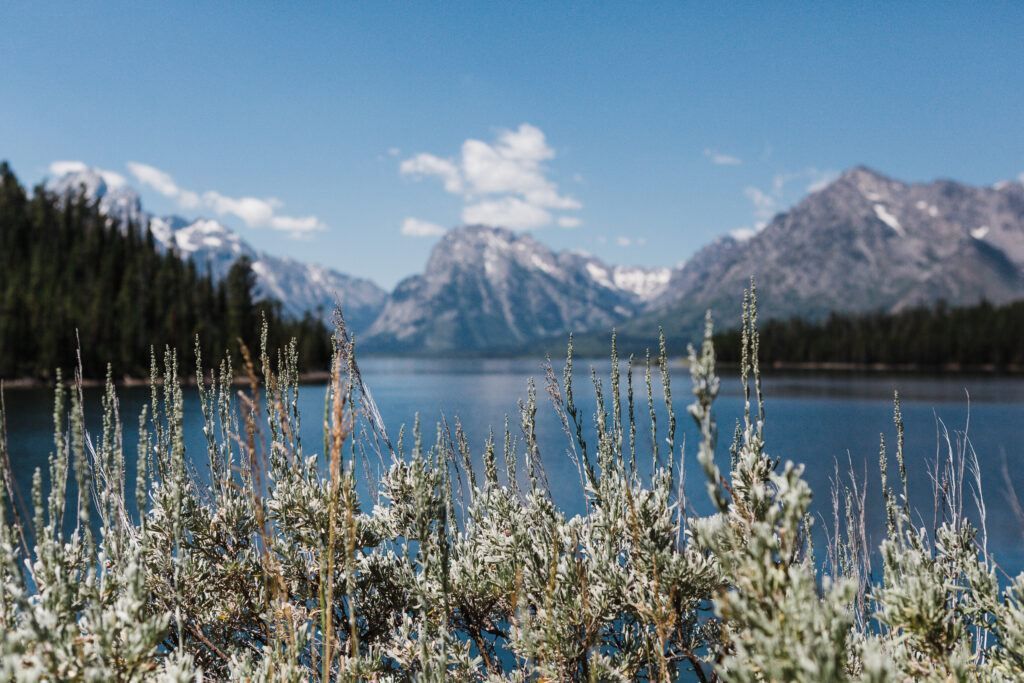
Photograph by Karthika Gupta
Key Lesson: Look for wildlife among the sagebrush flats in the early morning hours or just after sunset. The sagebrush isn’t very tall in most places, so you have a good chance of spotting wildlife if you are patient.
Wet Meadows, Wetlands, Lakes and Ponds
Numerous large and small water bodies dot the landscape of Grand Teton. Jackson Lake and Jenny Lake are perhaps the largest water bodies, but even smaller ponds and wetlands look really pretty against the majestic Tetons. Plus, they make great places to catch wildlife like moose, beavers, and even elk. Look for waterbodies to get that iconic reflection shot of the Tetons.
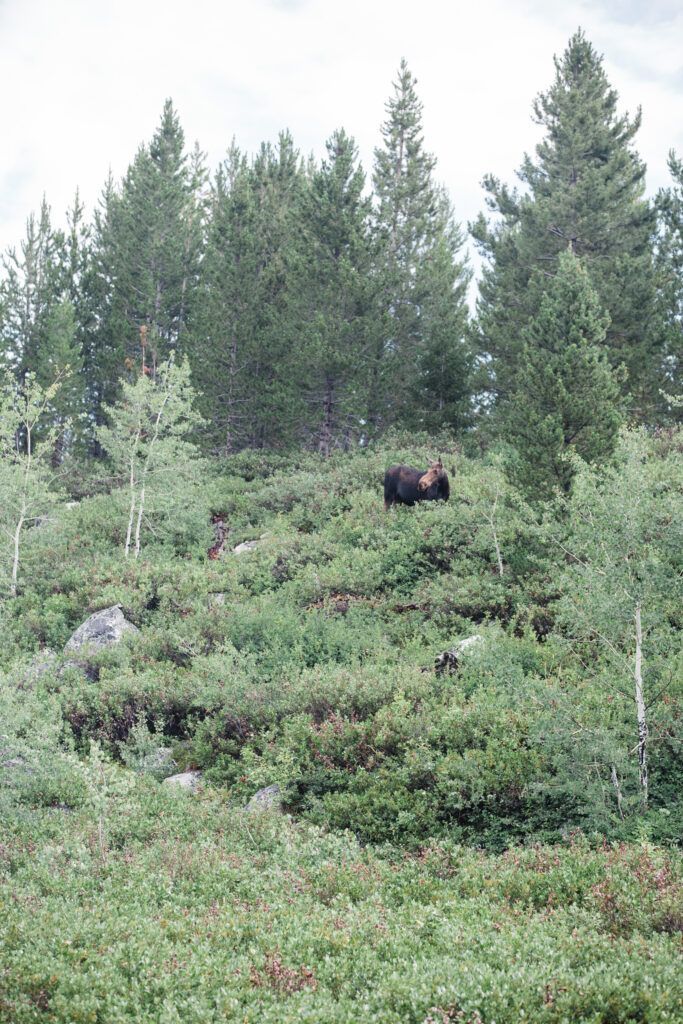
Coming up on this moose in one of the trails was such a treat. And thankfully I carried my 70-200mm on this hike. I always hike with it and my 24-70mm. I have done it often enough that the weight doesn’t bother me. Photograph by Karthika Gupta
Tips for Photographing in Grand Teton
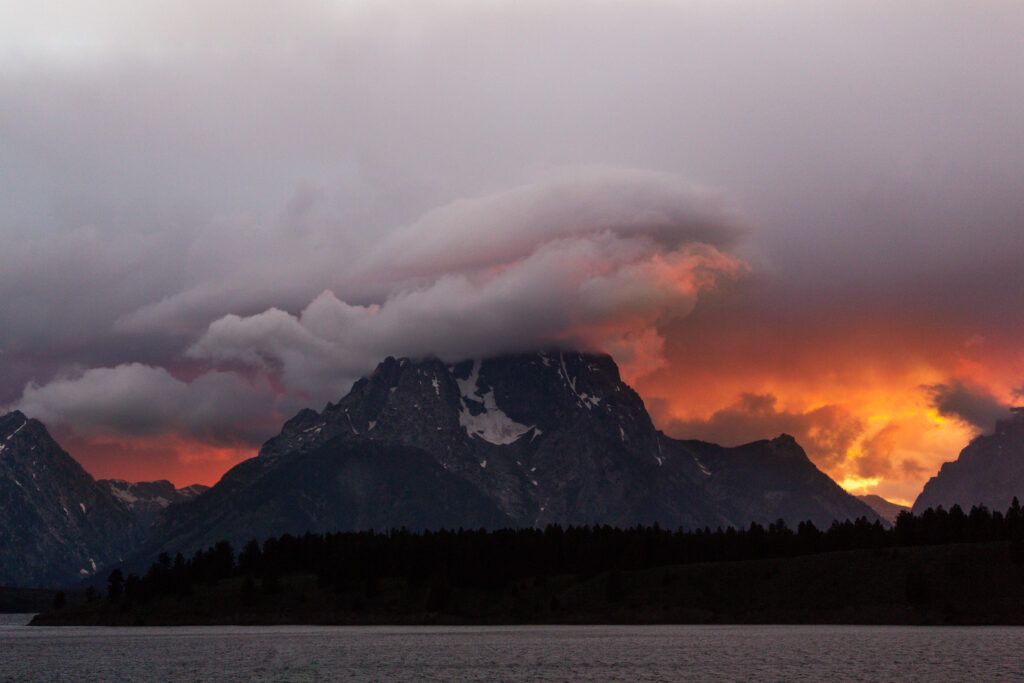
Photograph by Karthika Gupta
- Sunset and sunrise are great times to be out photographing landscapes and mountains in Grand Teton. There are many spots in the part where you get breathtaking views of the snowcapped mountains. Add to that golden light or early morning soft light, and you have a winning shot. So be aware of sunrise and sunset times, as well as the weather forecast. Check your weather app. Watch for clouds to the east that might block the rising sunlight. You are sure to get a great shot when it is clear to the east.
- Dress warmly. The weather in the Tetons is always on the cooler side even in the height of summer, especially if you are out and about early in the morning or after sunset. Dress in layers and shed them as needed.
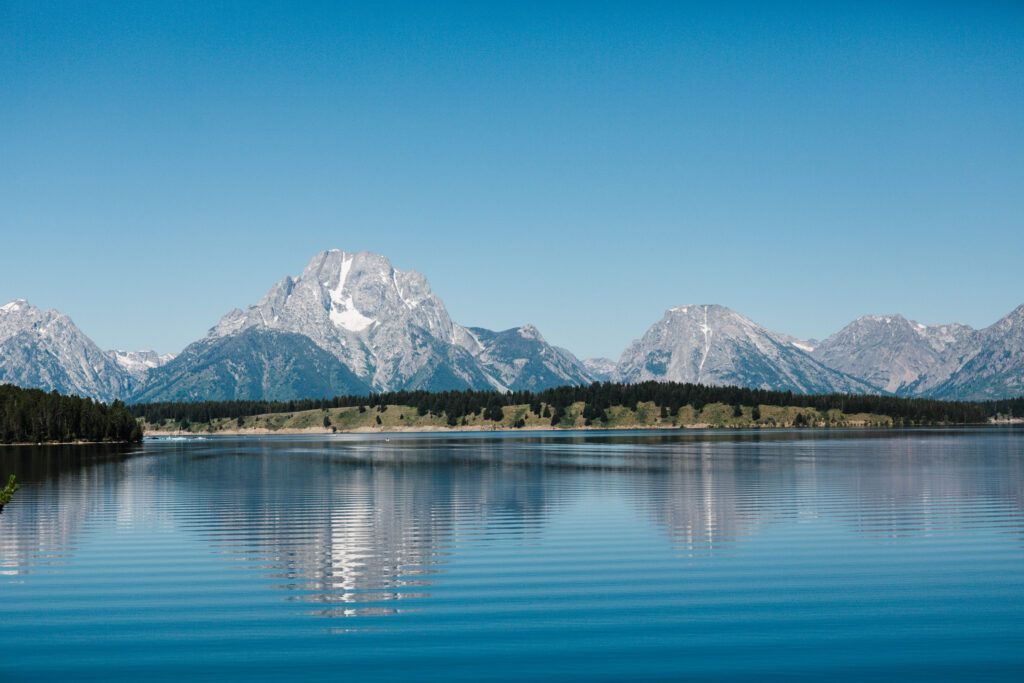
Photograph by Karthika Gupta
- There are many large mammals (bison, moose, bears) in the park, so drive slowly and always keep an eye out for wildlife. There are places in the park where you might come up to a blind curve like around the Jackson lake dam, so slow down and be cautious when you are driving around at night.
- Do not harass the wildlife in any way. That would include rolling down windows and feeding them, whistling to get their attention, or even blocking their path. Wildlife encounters can be dangerous for humans and animals.
- Be friendly and interact with other photographers you meet on the trails and in the park. It is about getting that perfectly unique shot. It is about capturing a stunning location through your unique perspective. Always say hello and share any wildlife sighting or fun photo opportunities you may have found. This is what makes the photographic community fun and exciting to be around.
Recommended Reading: Want to expand your shooting skills and master photography? Grab our set of 65 beautifully designed and printable Action Cards that will give you over 200 photography assignments to help you take your photography to the next level. Check it out here.
Best Locations Within Grand Teton National Park
#1 Schwabacher's Landing
Schwabacher’s Landing is a hot favorite among many people in Grand Teton. Walk along the river channel from the parking area for approximately a half-mile to get an endless number of photography options. Make sure to show up early as this is a very popular spot. This location is good for both early mornings and late evenings. Sometimes you might spot the beaver family that has dammed the river for some incredible wildlife shots as well.
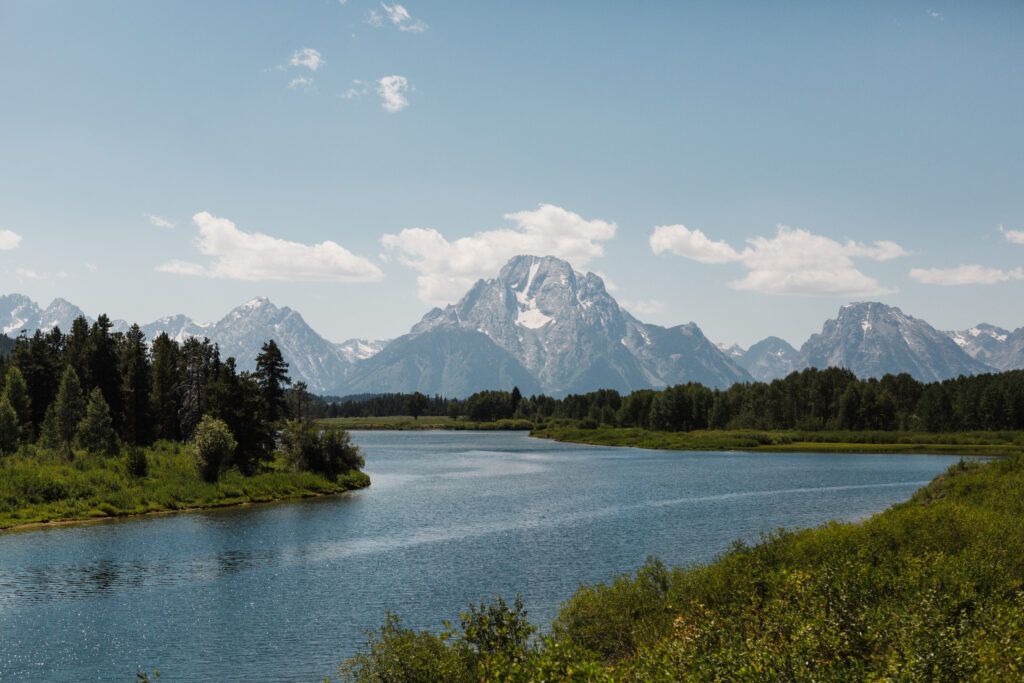
Photograph by Karthika Gupta
Key Lesson: Bring some water shoes so you can get in the water and perhaps practice some reflection shots or find unique angles that others might not get.
#2 Mormon Row and Moulton Barn
Located on Antelope Flats, this is probably the most photographed barn in Wyoming, if not the world. Mormon Row was an early homesteading settlement in Jackson Hole before Grand Teton National Park was formed. Moulton barn is to the south on the row of buildings and John Moulton barn is to the north. If it’s your lucky day, a bison herd might be moving through and you can photograph the barn, the mountains, and the animals for a true Grand Teton postcard moment.
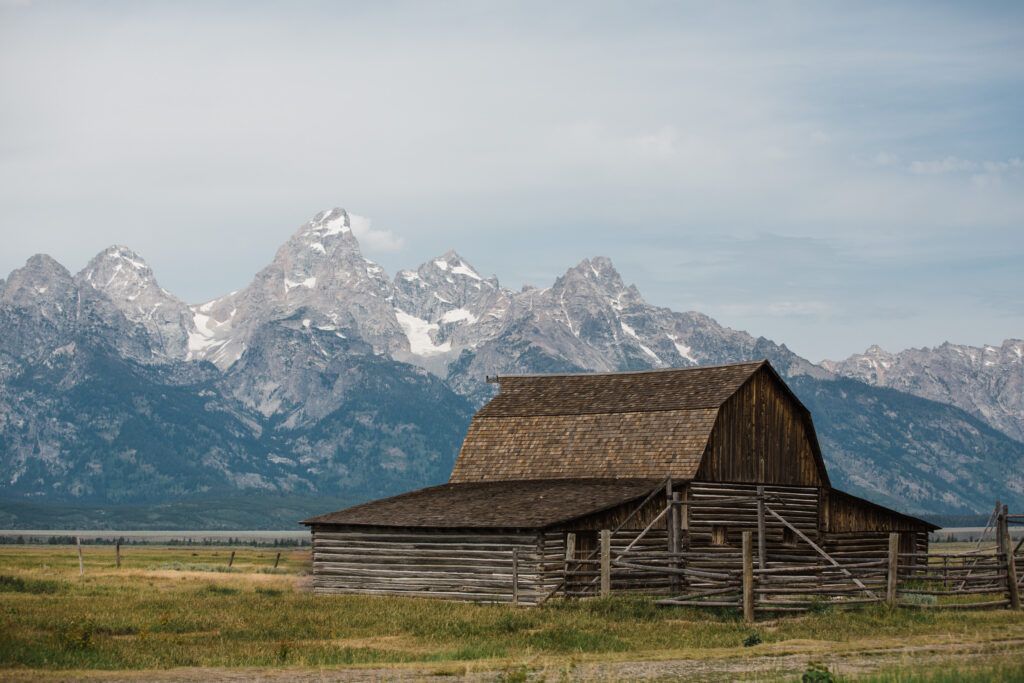
Photograph by Karthika Gupta
Key Lesson: The parking lot for Mormon row is relatively narrow and small, so arrive early and be prepared to wait a bit for a spot to open up. Also, remember to drive slowly to keep the dust down on the gravel road that leads you to the Moulton Barn.
#3 Oxbow Bend of the Snake River
The Oxbow Bend area provides another great reflection of the Grand Tetons and Mount Moran. The best time to get here is early morning before the wind kicks up. You can park anywhere along the road and just walk the bank to find your perfect frame. In June, you will find wildflowers along the north side of the road. Take your time to walk up the hill and find a good spot to capture both foreground and background elements.
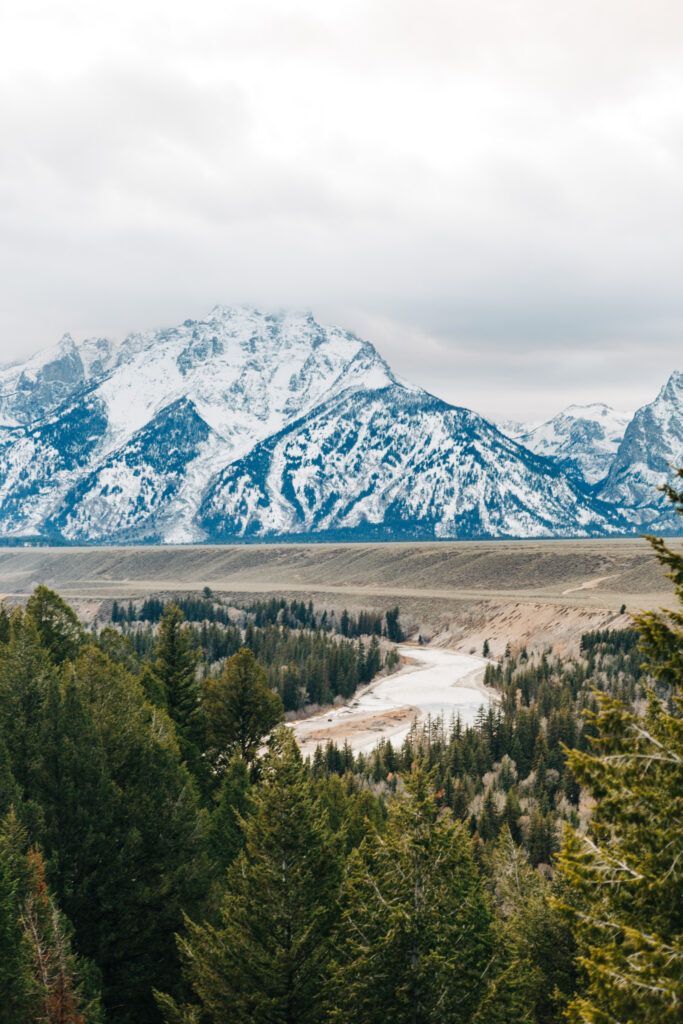
Photograph by Karthika Gupta
#4 Snake River Overlook
This is arguably one of the most popular spots in Grand Teton National Park thanks to Ansel Adams’ famous photograph of the Tetons. Thanks to Ansel Adams for pioneering this vantage point of the Snake River, it is a great location for sunrise photos of the Tetons.
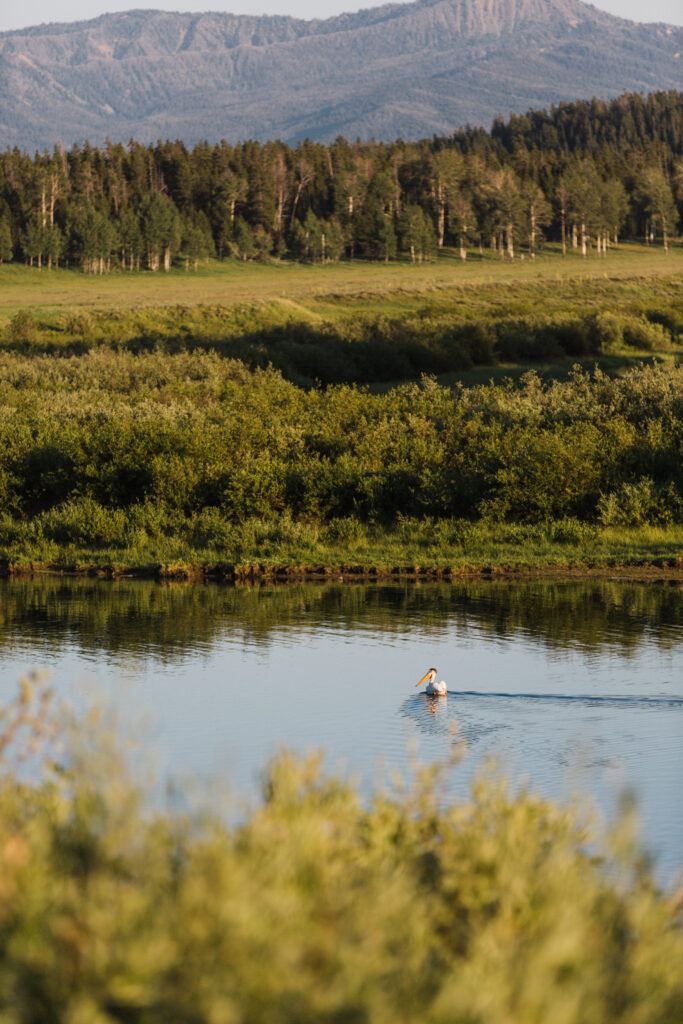
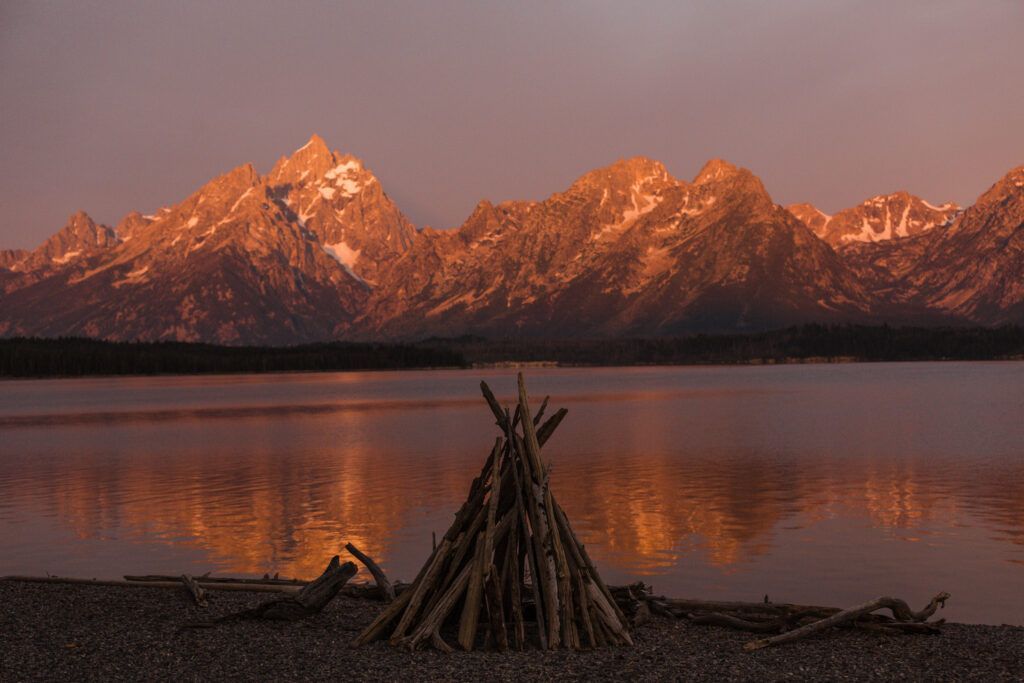
Photographs by Karthika Gupta
Photographing Wildlife in Grand Teton
Like its neighbor Yellowstone National Park, Grand Teton National Park has abundant wildlife at any time of the year. From moose to bison to bears, wolves, elk, deer, and coyotes along with many bird species, the park is a great place to practice your wildlife photography skills.
Like its neighbor Yellowstone National Park, Grand Teton National Park has abundant wildlife at any time of the year.
You can find moose hanging around the river bottoms and some are occasionally spotted near the Moose bridge. I have also seen moose along the backcountry hiking trails near the Taggart lake and Bradley lake area. Black and grizzly bears are harder to spot, but in the fall, you’ll find them eating berries along the Moose-Wilson road. Elk are more common around the park roads. And don’t forget to drive around Jackson Hole, the town closest to Yellowstone National Park. On one trip, I saw 12 moose and 2 foxes in and around Jackson Hole.
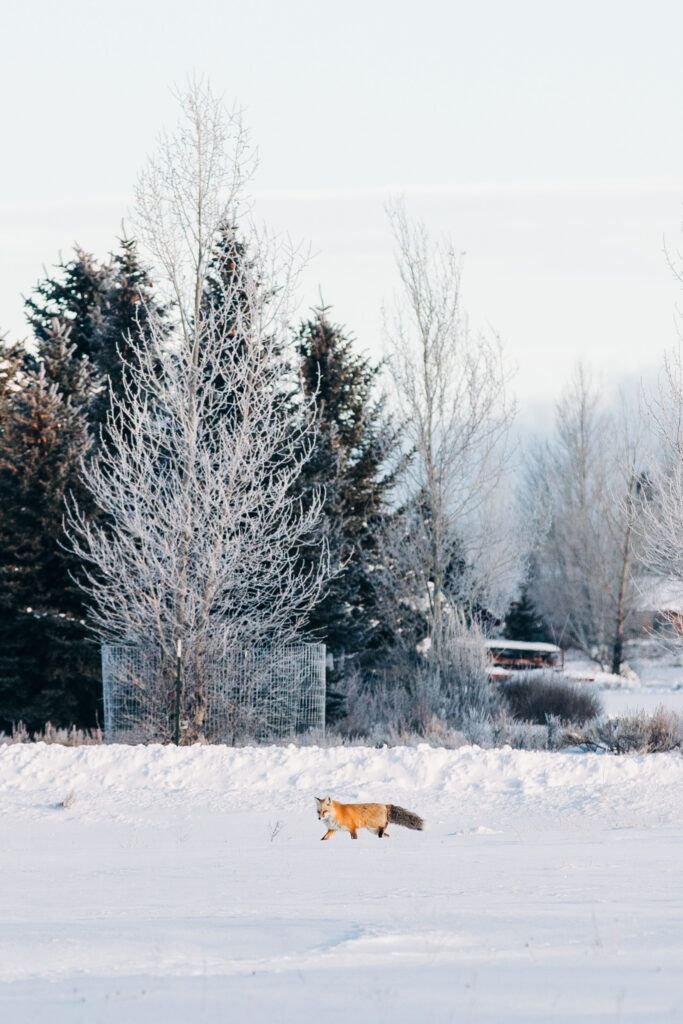
During the fall, rut elk can be seen in the hundreds both in the park and in the National Elk refuge in Jackson Hole. Photograph by Karthika Gupta
As with all wildlife in National Parks, remember to keep your distance and refrain from activities that will alter the animal’s natural behaviors. If you are out and about in Grand Teton, be respectful of other travelers who might not be photographers and are just out and about to enjoy nature and the park.
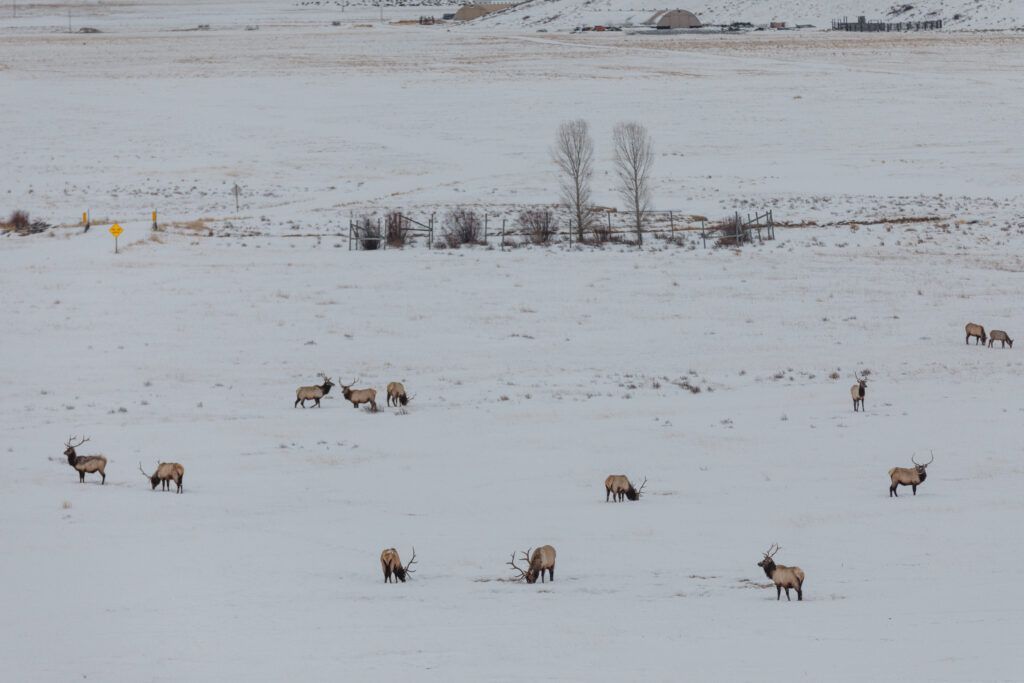
Photograph by Karthika Gupta
While Grand Teton National Park is much smaller than Yellowstone National Park, this park is special in its own way. No matter the season, there is something to see and photograph in the park. Plus, the Tetons are so majestic and appear almost close enough to touch because of the lack of foothills, so it is no wonder this is a favorite among landscape and nature photographers.
Recommended Reading: Want to expand your shooting skills and master photography? Grab our set of 65 beautifully designed and printable Action Cards that will give you over 200 photography assignments to help you take your photography to the next level. Check it out here.
Self-Check Quiz:
- When trying to spot wildlife to photograph, why should you pay attention to crowds?
- Who has right of way on Grand Teton roads? Animals or humans?
- When is the right time to photograph the famous Teton range?
- How should you prepare for a day of photography in Grand Teton?
- What is the best time to visit Grand Teton National Park?


